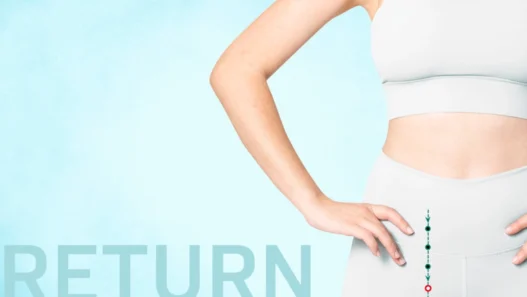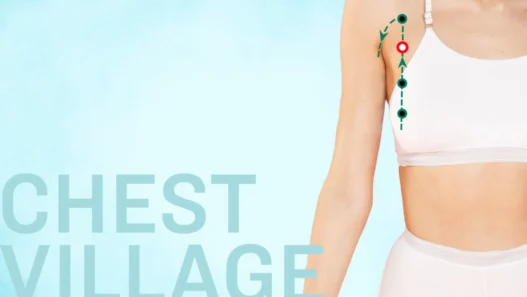If there’s an acupoint that carries both symbolic and functional weight, it’s Ru Zhong (ST17)—also known as Breast Center. Positioned at the center of the chest, Ru Zhong isn’t famous for dramatic therapeutic interventions but rather for how it helps practitioners and patients navigate the entire torso. Since ancient times, it has served as a widely used anatomical landmark, guiding treatment through proportional mapping instead of rigid measurements.
Here’s the twist: Your traditional Chinese medicine (TCM) practitioner can’t needle it. They won’t use the gentle heat therapy called moxibustion either. Instead, this acupoint plays a different kind of role—one rooted in precision, self-awareness, and quiet utility.
A Reference Point With Roots in Classical Medicine
First described in the “Zhen Jiu Jia Yi Jing” (“A-B Classic of Acupuncture and Moxibustion”), Ru Zhong is associated with the Stomach meridian, an energetic pathway that links the stomach and carries vital energy, or qi, throughout the body. Ru Zhong is located in the middle of the nipple. Due to its location, it is not used in clinical practice but rather serves as a reference point for finding other clinically significant acupuncture points.
Practitioners use the nipple, and by extension, Ru Zhong, to measure distances in cun—an ancient measurement unit equivalent to a thumb’s width at the knuckle. These measurements are not arbitrary but based on each patient’s unique proportions. Additionally, practitioners have observed that the nipple is located four cun lateral to the body’s midline and aligns with the fourth rib, making it a valuable anatomical marker in traditional body mapping.
Ru Zhong’s educational significance lies in its ability to help practitioners ground their work in the actual form of the body rather than rely solely on textbook diagrams.
Function Without a Needle: The Energetic Purpose of Ru Zhong
Although it is never needled or heated, Ru Zhong still carries therapeutic significance. Its location and meridian alignment hint at two notable self-care functions. First, as part of the Stomach meridian, Ru Zhong can be gently massaged to support digestion. Think of it as clearing blockages in an energetic pipeline. Second, and more importantly, it plays an important role in postpartum care. Massage around this point has been linked to improved lactation and reduced breast discomfort in new mothers.
There’s also a surprising third function: Ru Zhong has been cited in protocols for excessive sweating, also known as hyperhidrosis.
Backed by Research: Nerve Pathways and Breastfeeding Benefits
Scientific interest in Ru Zhong has been increasing, particularly in how it communicates with the nervous system. One animal study injected a nerve tracer into Ru Zhong and found it to be directly linked to sensory neurons in the upper spine (T4–T6). This finding supports the traditional view that energy—or, in this case, nerve signals—travels along specific pathways in the body. Moreover, when electroacupuncture was applied along meridians, tracer uptake increased, and the network of activated nerves expanded. The researchers concluded that meridian-based stimulation can be tracked and mapped through nervous system responses.
Human studies also point to Ru Zhong’s practical benefits. In one clinical trial, postpartum women who received body massages combined with breast acupoint massage (at Ru Zhong and Ru Gen) began producing milk earlier and in greater volumes compared to those who received only routine care. The women also reported less pain and a smoother breastfeeding experience.
How to Locate and Stimulate Ru Zhong
Ru Zhong sits in the center of the nipple. As a bilateral acupoint, it is symmetrical and found on each side. Since acupuncture and moxibustion are off-limits here, stimulation must be manual and gentle. Use light circular motions and adjust pressure accordingly. While light soreness is a sign that you’ve located the acupoint, acupressure should never cause pain.
Precautions
Due to Ru Zhong’s location, always begin with gentle pressure, especially if you are nursing.
A Self-Reliant Point for Self-Aware Care
Ru Zhong may not be part of your acupuncturist’s toolkit, but that’s exactly what makes it unique. It reminds you to honor the unique layout of your anatomy. Whether you want to support digestion, navigate breastfeeding challenges, or learn more about how your body works, Ru Zhong is there to help you find your way.
TCM expert Shihhsiang Hung reviewed this article for accuracy and clarity.
Originally published in Epoch Times on 11 July 2025























